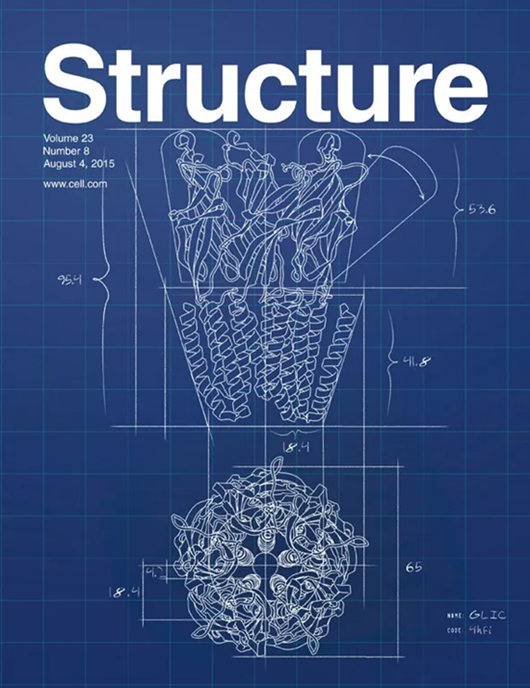反终结者 LoaP 加载到 RNA 上,追逐失控的 RNA 聚合酶
IF 4.4
2区 生物学
Q2 BIOCHEMISTRY & MOLECULAR BIOLOGY
引用次数: 0
摘要
在本期《结构》杂志上,Elghondakly 等人1 发现了假乙醇嗜热杆菌(Thermoanaerobacter pseudethanolicus)反终结因子 LoaP 与其目标(dfn RNA 发夹)结合的晶体结构,LoaP 是无处不在的 NusG 转录因子家族的一员。LoaP 使用 RNA 作为识别决定因子,这在 NusG 旁系亲属中是独一无二的,并且在 RNA 的主要沟槽中进行不寻常的接触。本文章由计算机程序翻译,如有差异,请以英文原文为准。
Antiterminator LoaP loads onto RNA to chase a runaway RNA polymerase
In this issue of Structure, Elghondakly et al.1 present the crystal structure of Thermoanaerobacter pseudethanolicus antiterminator LoaP, a member of a ubiquitous family of NusG transcription factors, bound to its target, a dfn RNA hairpin. LoaP uses RNA as a recognition determinant, which is unique among NusG paralogs and makes unusual contacts in the major groove of the RNA.
求助全文
通过发布文献求助,成功后即可免费获取论文全文。
去求助
来源期刊

Structure
生物-生化与分子生物学
CiteScore
8.90
自引率
1.80%
发文量
155
审稿时长
3-8 weeks
期刊介绍:
Structure aims to publish papers of exceptional interest in the field of structural biology. The journal strives to be essential reading for structural biologists, as well as biologists and biochemists that are interested in macromolecular structure and function. Structure strongly encourages the submission of manuscripts that present structural and molecular insights into biological function and mechanism. Other reports that address fundamental questions in structural biology, such as structure-based examinations of protein evolution, folding, and/or design, will also be considered. We will consider the application of any method, experimental or computational, at high or low resolution, to conduct structural investigations, as long as the method is appropriate for the biological, functional, and mechanistic question(s) being addressed. Likewise, reports describing single-molecule analysis of biological mechanisms are welcome.
In general, the editors encourage submission of experimental structural studies that are enriched by an analysis of structure-activity relationships and will not consider studies that solely report structural information unless the structure or analysis is of exceptional and broad interest. Studies reporting only homology models, de novo models, or molecular dynamics simulations are also discouraged unless the models are informed by or validated by novel experimental data; rationalization of a large body of existing experimental evidence and making testable predictions based on a model or simulation is often not considered sufficient.
 求助内容:
求助内容: 应助结果提醒方式:
应助结果提醒方式:


